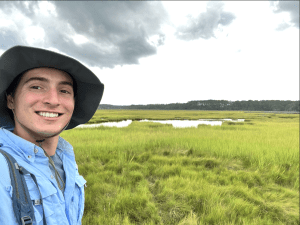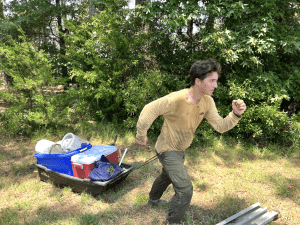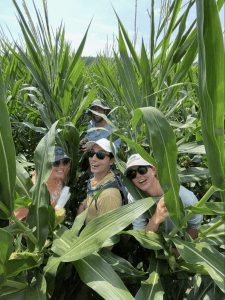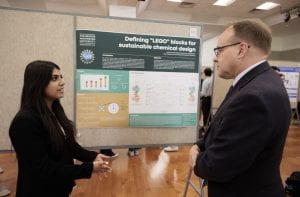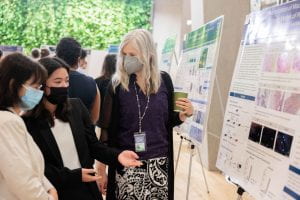The following blog post was written by fellow UHPer and Fall 2023 SURE Award recipient, Katie Phillips (Neuroscience, ’25). Read on about Katie’s research and how she plans to utilize the SURE Award funding to further expand upon her experience!
As a first-year neuroscience student, I knew I wanted to partake in research to learn the practical application of class content. My UHP Peer Advisor connected me with Dr. Peusner, a Principal Investigator (PI) in the Department of Neurology at GW SMHS. Dr. Peusner’s work stood out to me because of her use of the chick animal model to reveal more about the vestibular ganglion (VG) and how its defects can affect children. I was excited to do research with applications to neurological and medical advancements, so I interviewed with her and was accepted into her lab! As a first-year student, I admit I had little neuroscience knowledge, but Dr. Peusner consistently indulged my curiosity and took the time to explain the importance of my work. Dr. Peusner showed interest in my success and took the time to teach me what was important to my work. Research, especially early in my time at GW, taught me fundamental neuroscience concepts and research techniques before taking neuroscience-specific courses and has allowed me to have opportunities I would not have had otherwise.
Dr. Peusner’s lab introduced a chick model to investigate the inner ear pathology of children with syndromic, congenital vestibular disorders (CVDs). Children with this disorder have a sac-like inner ear with missing or truncated semicircular canals, an ear structure essential for identifying movement in space. The otocyst is a part of the inner ear that is a fluid-containing organ containing otoliths, which are calcium crystals, that comprise the saccule (sac) and utricle (utr) (see images below). In humans and chicks, when the head is moved, gravity causes the membranes in the otoliths to move which bends the hair cells in your inner ear and sends information about the movement to the vestibular nerve and brain. By rotating the otocyst in the chick’s inner ear 180 degrees at the embryo day 2 (E2) stage, a sac-like inner ear forms, which is similar to what we see in children with CVDs. The procedure is referred to as the anterior-posterior (front-back) rotation of the otocyst and creates what the lab identifies as the ARO chick. The ARO chick is a study into the role of the semicircular canals in vestibular system neural circuitry, a circuit system whose neurons transmit signals from the outer ear to the brain are the VG cells. VG neurons are reduced in children with CVDs, so our lab investigates whether VG neurons survive or reduce at the embryo day 13 (E13) stage.

My research project involves working with E13 chick specimen images and analyzing the VG on IMARIS, a 3D image analysis software. I outline the boundaries of the VG, count the VG neurons, and determine the volume of the VG in normal (completely unrotated) and ARO (rotated) chicks. Using this information, I also use statistical analysis to determine the differences between normal and ARO chicks. I will be using the SURE award to pay for my IMARIS sessions and data collection, and it will assist me in publishing a paper with my research in top journal. Following the publication of the paper, I plan to continue in Dr. Peusner’s lab analyzing the VG in the hatchling stage (H5) and completing my senior thesis. I will continue to outline the VG, count VG neurons, and use other statistical analysis tests to analyze the hatchling stage of chick development. Using these findings, I plan to create a poster presentation for the 2024 Society for Neuroscience conference and contribute to a paper for the hatchling phase as my senior thesis product.
Undergraduate research has been an incredibly valuable experience, in which I have learned critical analysis skills, gained knowledge of statistics and fundamental neuroscience, and had the opportunity to present as a first author at the Society for Neuroscience conference. These abilities will help me in future endeavors, as I plan to become a practicing physician, caring for patients potentially with the disorders whose development I study. Without my involvement in research, I would have missed out on countless opportunities for professional and academic development. I also believe that by getting involved in research early, I have had an advantage in my classes since I connect what I learned in class with my research, and have a deeper understanding of the content. I would like to thank Professors Carol and Lee Sigelman for the opportunity to continue my work with the use of the SURE award. I want to express to any undergraduate considering research to give it a try – you will be surprised and grateful for the opportunities you find!

Interested in applying for your own SURE Award funding? Find out more about the application process here!
